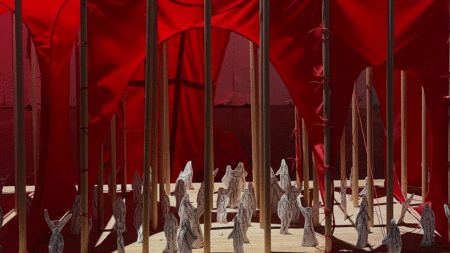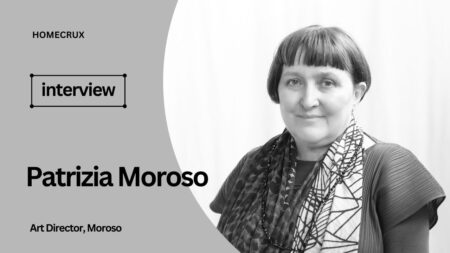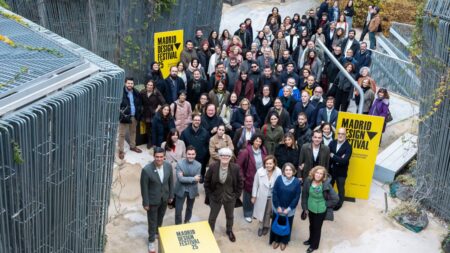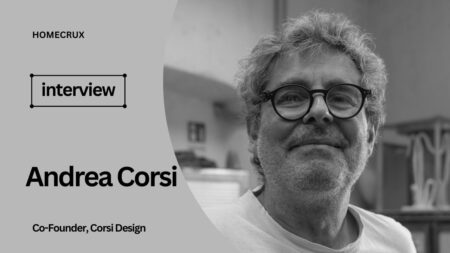With a legacy dating back to the early 1900s, Colombian brand Victoria Cookware is changing the cast iron cookware industry by altering the ergonomics and style of these hardy pots and pans. Established by 16-year-old Raúl Mejía in 1939, the company started working with metallic toy soldiers and decorative crosses before shifting gears into cast iron presses, skillets, pots, and pans.
85 years later, his son CEO Andres Felipe and grandson Manuel are leading the legacy worldwide, making Victoria Cookware a trusted family name. Homecrux got into a conversation with Manuel Mejia Warren, Global Sales Manager, Victoria Cookware – who also directed the development of Victoria’s latest Signature line – to know the future plans of his family-run brand and how the company is establishing its foothold in Asian market after success in America and Europe.

Homecrux (HC): Cast iron cookware hasn’t changed much in the past century. Why do you think that is?
Manuel Mejia (MM): It’s actually far more than a century. There’s evidence that people were using cast iron recipes and tools since the Iron Age. First in China and then in Europe during the Middle Ages humans have used this type of cookware for millennia for its longevity, heat distribution, retention, and natural nonstick properties when seasoned. Nowadays, cast iron is having a renaissance for the qualities I already mentioned, plus it’s the healthiest cookware in the materials market.
In 2015, we started to modernize our plant to make better, more competitive products. The new machinery required new molds. So we saw this as an opportunity to redesign our whole line of products.
First, we tested most American and European brands and we thought we could improve the cookware when it came to human ergonomics and functionality, which are critical. To that, the cast iron is a heavy item. So we found that the competitors’ handles were short and uncomfortable. Therefore balancing them was very challenging.
The oil pour spouts didn’t work properly. Plus the surface we thought were a little rough, when the seasoning process takes a little longer to start being non-stick. So we addressed these flaws, redesigned them, and they were noticed, these tweaks, especially in the American market, which is the most competitive market in the world. And so then we knew there would be a great appeal and then a bunch of articles that came out about our products. That’s how we are positioned in the American market.

HC: Was Victoria cookware always your choice or it happened because it had to as a family business? If it weren’t for Cast Iron, do you think you would be doing something else?
MM: I always liked cooking. I remember when I was young, I was always the guy on the barbecue among my friends. And to this day, I am the one that grills whenever with family and friends. I saw that the factory at the time were mainly corn grinders and OEM. And I thought it would be super cool to do a cast item line oriented to barbecuing. And that’s how I got involved in the business.
The thing is that I professionally studied product design engineering. I started from a very young age to do freelance designs for the factory. So everything kind of just aligned toward that direction. I was a product design engineer and I also like cooking and I enjoyed it so much. And now I’m in sales. I really enjoy what I do. So it’s difficult to think of something else that I would want to be doing.
Also Read: From Perfectly Seasoned to Perfectly Reasoned – Best Cast Iron Skillets for 2024
HC: Can you talk us through how your family has defined cast iron industry in Colombia and beyond the borders? And where do you see yourself in the global competition?
MM: We knew that there was a huge competition, especially in North American market and Europe. So our focus in that market was through design innovation, smoother finishes.
Despite my family’s 80-year history producing cast iron in Colombia – where there was less cast iron culture than in the U.S. – we had to start by making people conscious that cast iron is an investment in your health and more environmentally friendly in a way to get the best results from your ingredients. This was initially hard because their first reaction was, why do I need to pay more for a heavier and more expensive item?

HC: What sort of challenges you’ve had to deal with in staying innovative and maintaining the values of your family brand?
MM: Staying innovative while maintaining the values, it has certainly been a balancing act. One of our main challenges is integrating modern technology and processes without losing the traditional craftsmanship that defines our products. We prioritize quality and sustainability, which sometimes means resisting trends that don’t align with these values.
HC: Victoria Cookware is looking to enter the Asian market after making inroads in America and Europe. What’s the immediate and long term plan for that?
MM: Entering the Asian market is an exciting step for Victoria Cookware. Immediately we plan to conduct market research, establish partnership with local distributors that share our passion and value, our heritage, our story. And launched targeted marketing campaigns. We, in fact, are going to do our first export to India. So, you will have our product in the market in the next couple of months.
For long term, we aim to build a strong brand presence through participation in culinary events, localized product development, and maintaining our commitment to quality and sustainability. Our goal is to become a trusted name in Asian kitchens, just as we are in America and Europe.
HC: How does your cookware cater to diverse cooking styles and cultural preferences across different countries?
MM: We consider Victoria a multicultural brand. Since the beginning, we look at other cultures as potential markets and inspiration for products. One good example is the tortilla press. My father got the idea after many trips to Mexico. Today it is our bestselling item. We have many other products that we have used in one culture to make one type of dish and a wholly different one in another. If there is an interest in a specific cast iron cookware for the Indian market, we will find a way to create it.
In fact, we have created the Tawas, which is very popular. Used in Indian cuisine and we got the inspiration from Trinidad and Tobago which have a very large Indian ascendance.

HC: Cast iron cookware is known for its durability and longevity, depending on its maintenance. So what is your maintenance mantra for cast iron cookware?
MM: The good thing about cast iron is that no matter how rusted it gets, it can always be restored by removing the rust with a metallic sponge. Wash it, dry, and then apply a thin layer of cooking oil and put it in the oven at 400 Celsius for an hour and then voila, it’s brand new.
However, if you don’t want to get to that point, you should always add a thin layer of oil after washing and drying. It is important not only to prevent rusting, but also to keep building its natural nonstick properties.
Also Read: How to Season Cast Iron Skillet in 5 Easy Steps
HC: What has been the most popular Victoria cookware and why? Do you have a favorite story about a product?
MM: I think the tortilla press is one of our most beloved products. Its popularity stems from its sturdy construction, ease of use, and ability to produce perfectly even tortilla presses. One of my favorite stories should be when a distributor in Sweden told us that the tortilla presses were selling like crazy, we were amazed. It turns out that Mexican food has got so popular in Sweden that there is something called Taco Tuesday or Taco Thursday. The point is, this new Swedish tradition with millennials and our Victoria Tortilla Press has become a centerpiece of the switch.

HC: What is so special about the Signature series that won the Red Dot Design Award 2023?
MM: Our team wanted to create cast iron cookware that was both aesthetically beautiful and functionally superior to its competitors. While making it lighter and more accessible than traditional cast iron, one of the biggest pain points for the consumer of cast iron is the weight.
The lighter the cast iron is, the more brittle it becomes, which is why we developed a metallurgic recipe that is virtually indestructible and oven-safe at 800 Celsius and it’s far lighter, up to 40% less than its competitors in cast iron cookware.
We reduce its weight, but by removing the material from areas where it’s not needed, such as the handle and layers of its cooking surface by machining with a regular cast iron made from gray iron. You couldn’t remove these layers without the risk of breakage when used by the consumers, especially when the thermal expansion happens. The handle will also break because of its thinness.
So, we managed to make a very light item without the risk of breakage. And by removing the material, for example, in the handles, we delay the thermal expansion. Therefore, we have a cooler handle.
HC: What is the next award-winning product for Victoria?
MM: Our signature series won America’s Test Kitchen Innovation Award in the United States. America’s Test Kitchen is revered for the rigor of its testing. So we were honored to receive this recognition. We were also notified of another prestigious award and we will announce it in the fall.

HC: Any message for our readers?
MM: Buy Victoria: We really put passion and innovation into our products. We hope that the Indian, Asian markets will be open to test our brands. It’s something that we make with the heart, we want to bring to the consumers the best experience possible.
Check out the detailed conversation with Manuel in the video below:
We thank Manuel for taking out time for this conversation!
Follow Homecrux on Google News!




